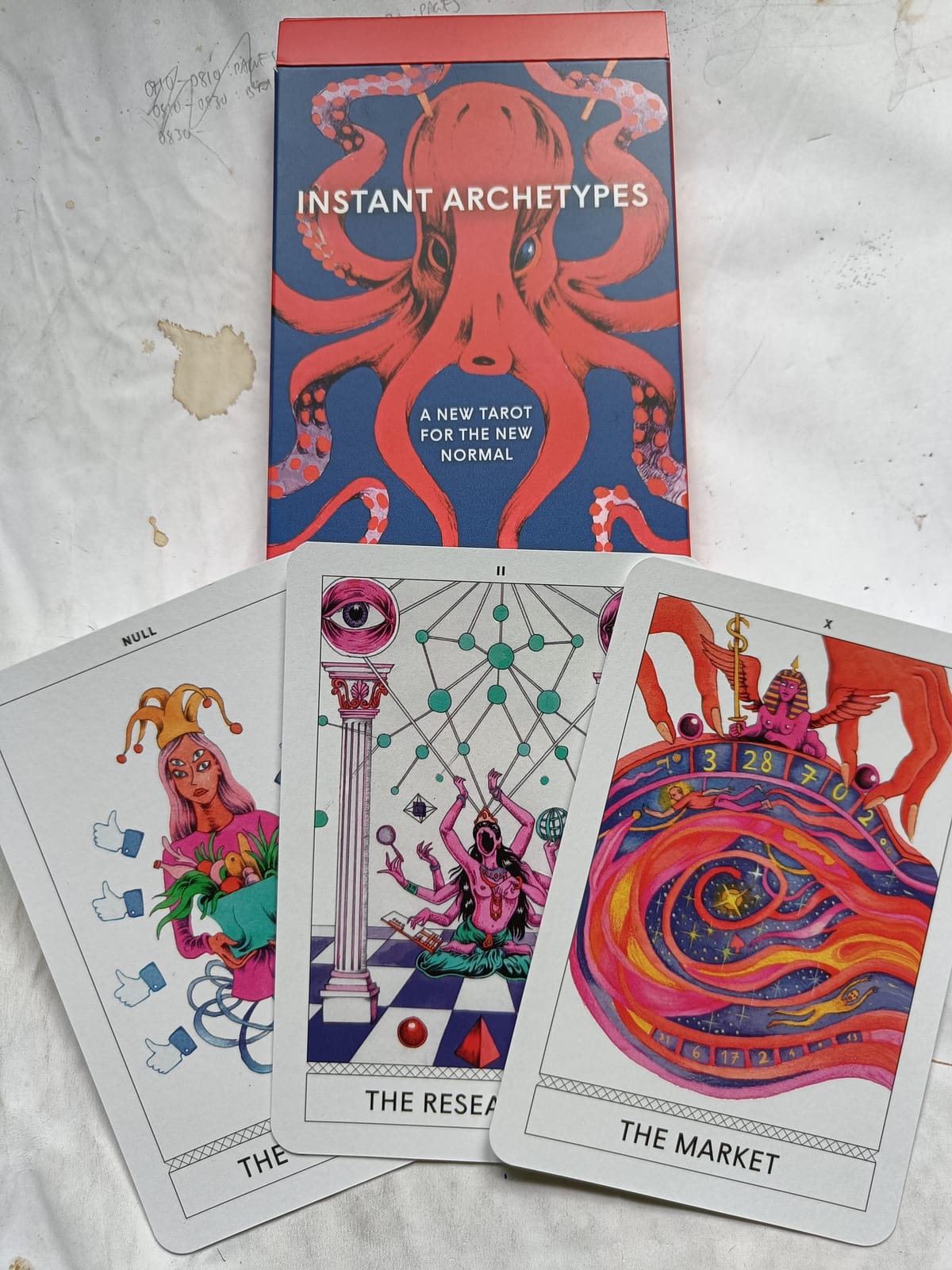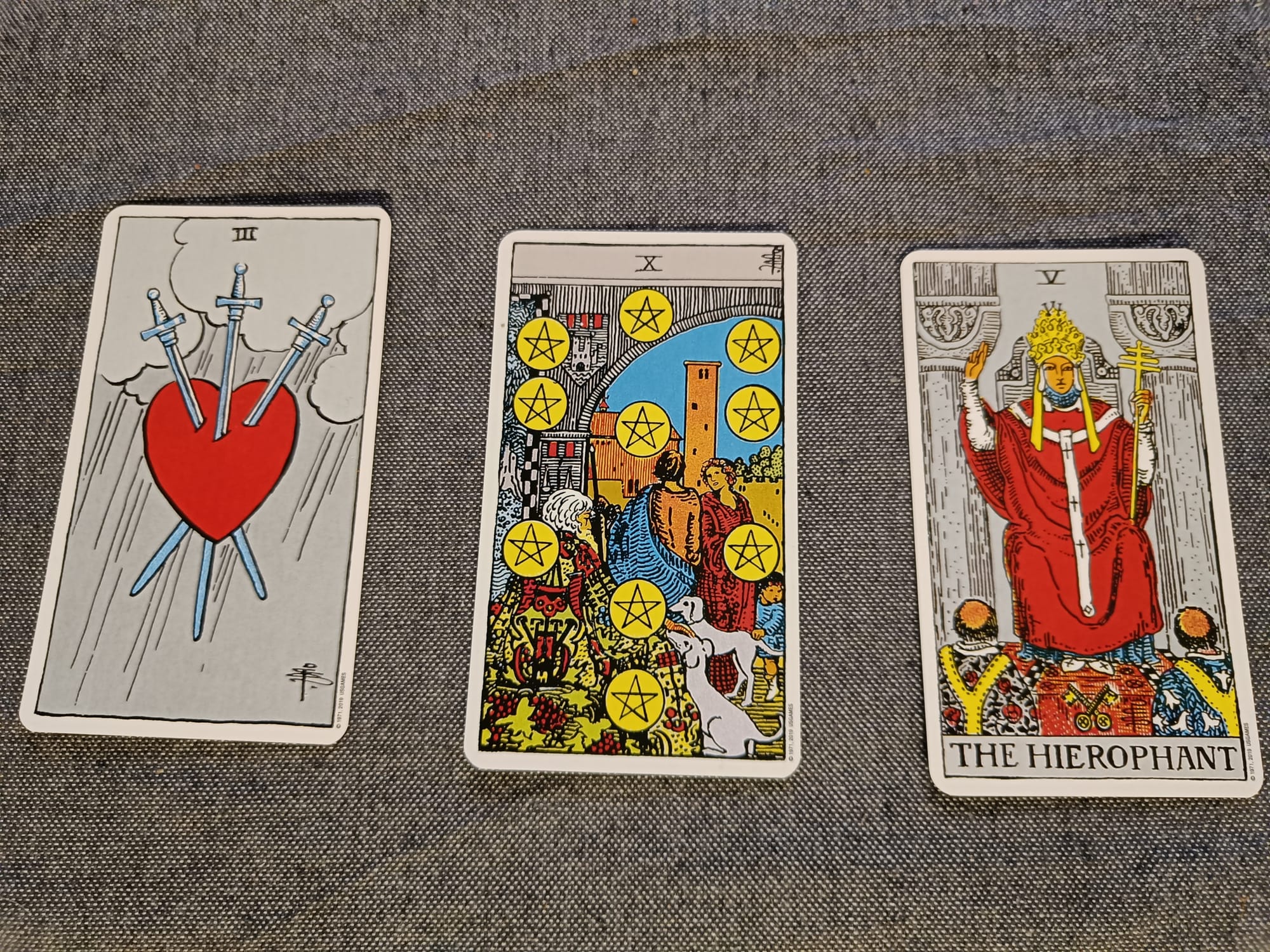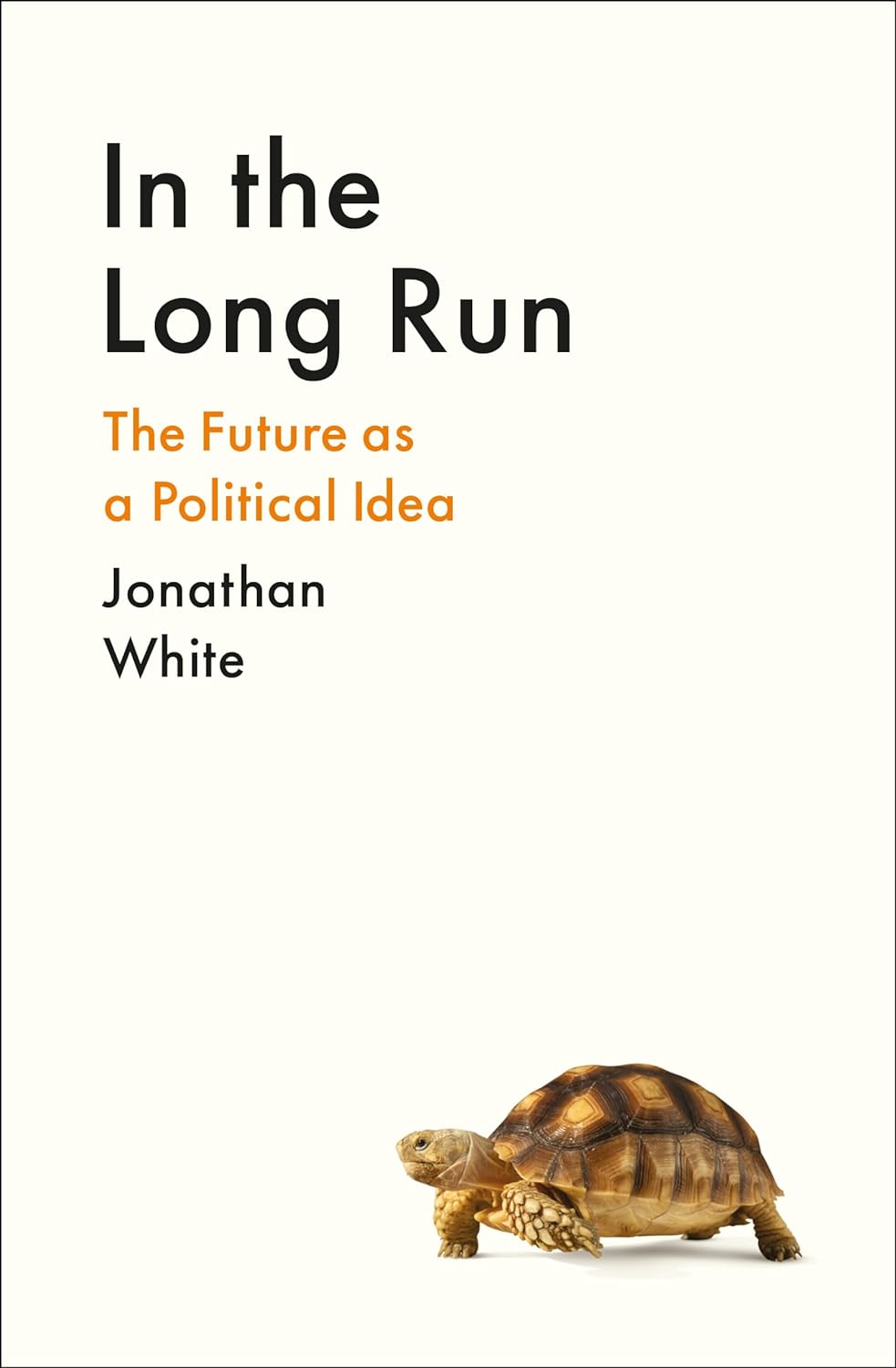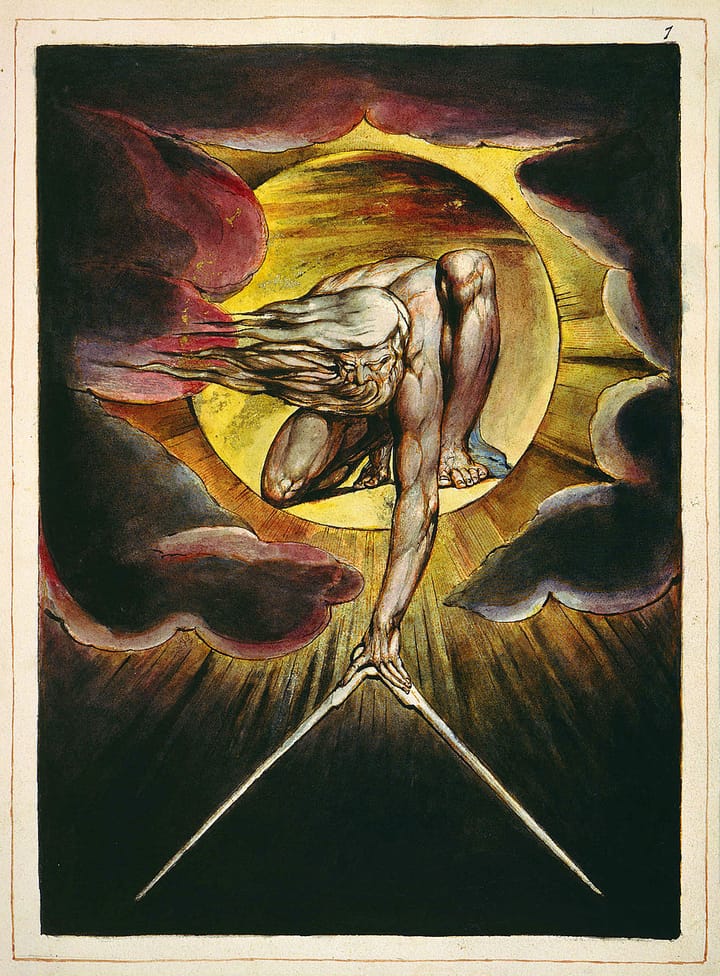week 30 / 2025: in defence of magickal thinking
Divination and foresight are a deal less different than some practitioners in either camp would have you believe—both address questions of strategy through the sensemaking process of storytelling. Perhaps you'd like a free trial by way of demonstration? Then roll up, roll up, and step this way...

“Promise her a definition / tell her where the rain will fall / tell her where the sun shines bright / and tell her she can have it all…”
Dear friend and colleague Anab Jain recently announced the availability of a last few copies of the Instant Archetypes tarot cards that Superflux made in collaboration with me and artist Amelie Barnathan. You’d need to go to Somerset House in London to get one, assuming they’ve not already disappeared!
Anab’s announcement was a timely nudge on a plan I’ve been poking at for a little while, so I’m going to announce it here and now: I’m now offering tarot readings for strategy questions, as a condensed form of foresight consultancy, and the first five sessions are free and gratis to anyone who is willing to play guinea-pig while I shake the bugs out of the process. Read on to find out more about the Instant Archetypes, and the close connection between foresight and divination practices…
The first print run of the Instant Archetypes started landing in people’s letterboxes more than six years ago, in early 2019, but the idea was born earlier still. I know that it emerged from what is sometimes known as the “lobby track” of a conference, an ironic formalisation for the conversations that happen between the scheduled talks and events at some professional or academic event; looking at my email archive, it seems that the conference in question was the Oxford Futures Forum of 2014, my memories of which are extremely patchy. (My imposter syndrome was off the charts, and my coping strategies somewhat counterproductive.)
Back in the mid-Teens, it seemed like every design and/or foresight studio was doing decks of cards meant to be used as workshop tools; as I recall it, I said something to the effect that these decks were doing much the same sort of work that the tarot can be turned to, namely the random juxtaposition of archetypal concepts as a sort of generative prompt for storytelling. “Tell me more,” said Anab, and the seed was planted.
That seed took a while to grow, as indicated by the dates above! There have been (I think) two print runs, but I believe there are no current plans to do another, because the challenges of the fulfillment process were quite considerable. Though if enough people keep asking, who knows? And people really do keep asking… the Archetypes are perhaps the best-known of all the projects in which I’ve had a hand, and it’s always lovely when people mention them to me. That said, I’m very aware that while my contribution was important, the reason they made such an impact was that they were so beautifully produced, with Team Superflux building on Amelie’s perfectly weird illustrations to make an incredibly desirable object.
It would be nice enough if people only wanted them as an art object, but it’s truly gratifying to know that people actually use them as intended, whether as workshop tools or as part of a personal thinking process. This is a tacit endorsement of my original observation—and of certain occult-adjacent habits of mind, if not exactly of occult practices in general.

We tend to conflate “magical thinking” with “wishful thinking”, but properly speaking the sort of thinking that informs genuine occult practices is anything but wishful. Rather, it’s systemic, abductive, connective, interpretive—which is to say, it shares many characteristics with the better sort of futures work.
Many of those who consult a tarot reader will end up taking away whatever conclusion they had already come to. The same is very true of foresight consultancy. In a world governed by the need to make money, we should perhaps forgive the sort of consultant—occult or otherwise—who provides exactly this sort of service. (That said, the most egregious examples are very hard to forgive.)
But the better sort of practitioner in either field has a drive to help people make difficult decisions, and they do so in much the same way. Tarot done properly is not about “seeing into the future” any more than a rigorous scenario suite is about “predicting what will happen”. Both practices are actually oriented to action in the present: when I read the cards for myself or for someone else, I am using the archetypes of the cards as a tool for getting a certain strategic distance from the situation—zooming out to see connections, patterns, similarities and distinctions, before returning to the more immediate issue of the question at hand. (Once again, we have the movement between the concrete and the abstract which, as I have been arguing recently, is the very essence of foresight.)
This is why interpretation is so important, and why taking the cards too literally is a mistake. To use the most obvious example, the Death card tends to freak people out, thanks in no small part to its use as a lazy shorthand in popular media. That card might, in a personal reading, relate to a literal death, but more generally it asks the questioner and the reader to consider moments of disjunctive change, and—crucially—the fear that often accompanies such moments.
The point being: change is inevitable and unpredictable, almost by definition, but our response to change is subject to our will. By reminding us of the fear response, the Death card doesn’t suggest that we try to avoid change, but rather that we should try to draw on our courage in facing it. But to make use of that prompt, we have to connect the abstraction of the card to the concrete question—and that is a narrative process, ideally done in collaboration between questioner and reader. Put another way, the cards are just a tool within the older and vastly more powerful technology of storytelling, which is the root of all sensemaking.
The point of the Instant Archetypes, while admittedly ironic on one level, was to relabel the major arcana with terms and images that might make more instant sense to a modern questioner, and therefore avoid some of the accumulated misinterpretations of the classic cards. That they have proven popular as things to be used rather than simply admired for their aesthetics is, I think, a confirmation of my instinctive recognition of the deep similarities between foresight and divination, as well as a sense that people are more open to interpretation and imagination as foundational to strategy, rather than merely supplemental.
I also think it’s time to put that connection to work, and start offering it as a consulting service like any other. So: if you’ve a strategic challenge looming, whether in business or your personal life, I invite you to bring that question to the cards, and to me. We can use the Instant Archetypes or one of the traditional decks, depending on your preference and, to some extent, on the nature of the question. (The classic decks are a better choice for more personal questions, for reasons I would be delighted to explain in detail.) We’ll take an hour over a video call, talk through your challenge, and see what new perspectives the cards might provide.
I need to look into the intricacies of cross-border VAT before I can start charging for this service, and it’s probably going to take a few runs to develop an approach that will work with the questioner and reader in different locations. So here’s an opportunity for you: the first five sessions I do will be free, gratis, first come first served. If you want to take one of them, drop me a line!
reading
I’m about two-thirds through Jonathan White’s In the Long Run. White’s project is made clear in his subtitle, “The Future as a Political Idea”, and he explores the topic through a series of antimonies: open futures versus closed futures, near versus distant, imagined versus calculated, and so forth. The writing is admirably clear, and I’m learning a lot of new things about the history of futurity.

I find myself somewhat at odds with White’s framing of the issue, however, particularly his assumption that futurity emerges from politics, and that culture is downstream thereof; this is pretty much the exact opposite of my own position. Furthermore, White is arguing in defence of democracy, but doing so in a way that rather begs the question of what we actually mean when we say that word.
This issue may well be resolved in the late stages of the book—on the evidence herein, White seems more than smart enough to realise he’s left the question hanging. But it feels like his final destination may end up being more reformist than revolutionary, and while I’m nowhere near the cheerleader for revolution that I may once have been, the limits of the reformist paradigm seem to be very present in the history he’s recounting, here. Indeed, I think the reform/revolution dichotomy itself, and its breakdown, may be the root of the foreclosure on futurity that White is so deftly describing… but I am prepared to be proven wrong on that point. Guess we’ll see!
a clipping
This week’s clipping continues the thematics of last week’s, through the medium of Dave Karpf reviewing Spears and Geruso’s After the Spike, yet another book on the population question. Karpf gives them short shrift, with his first and most damning accusation being that Spears and Geruso are doing “sloppy futurism, wrapped in a thin veneer of social science” (ouch). Given it turns out that the authors were funded to the tune of US$10m by the “charitable” foundation of serial baby-daddy and cosplay eugenicist Elon Musk, however, perhaps we shouldn’t be surprised…
As with all Karpf roasts, it’s worth reading in full if you’re following the debate. But the take-away quote I’m going with is a nice close rhyme with Hanna Ritchie’s bit from last week:
Nowhere do they engage with what strikes me as the strongest argument against pronatalism:
The opposite of pronatalism isn’t antinatalism. Or at least it shouldn’t be. The opposite of pronatalism is leaving people the fuck alone.
(But what about all the future humans that could hypothetically be born one day?!? Shut up. That’s what. Leave people’s reproduction choices the fuck alone.)
Amen, brother.
ticked off
- Eleven hours on a short-order editorial job. (It’s always so much easier to edit someone else’s writing than your own, somehow.)
- Ten hours on PROJECT FLATPACK. (Gearing up with the preliminaries on this one.)
- Six hours on PROJECT PONTIF. (I’m always glad to have paying work on the slate, but it has rather displaced poor old PONTIF this week. Hence my carving out some blocks of time for it in the week ahead…)
- Eight hours of admyn. (Bits and, indeed, bobs… and the writing of these here weeknotes, natch.)
- Ten hours of undirected writing and reading, as always.
A busier week than it felt at the time, if that makes any sense? The weather’s been fairly hot by local standards, which—while I am very much a creature of summer—is not conducive to the sense of clarity and focus that tends to characterise my more productive periods. But this, again, is exactly why we document this stuff: perception is important, but it really doesn’t tell the whole story.
kinmaking
Had a lovely conversation with Lenka Chobotova this week, through whom I heard about what has to be my candidate for all-time best ever business name: Denmark’s very own Stupid Studio. Hats off to that bold and memorable choice!
OK, that’s all for now. Don’t forget to drop me a line if you want to take one of the five free strategic-tarot trail runs! In the meantime, I hope all’s well with you.
This has been the Worldbuilding Agency weeknotes for Week 30 of 2025. Thanks for reading! If you've enjoyed them, it's free to subscribe. If you are already subscribed, please send to a friend who you think might also like it!





Comments ()